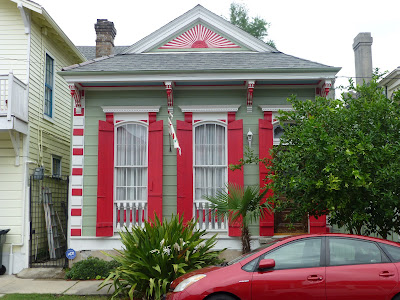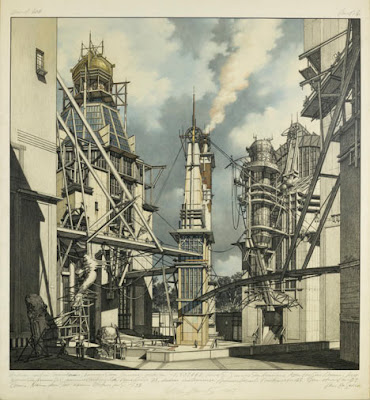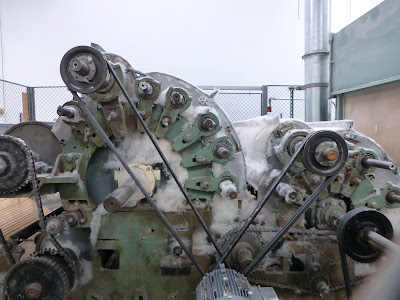Our friends live in the Garden District, one of the oldest and most beautiful neighborhoods, easily accessible by streetcar (and on bike or foot) from downtown and the French Quarter. According to Stuart, and he'll correct me if I get this wrong, it's what's known as a double corridor shotgun camelback! They've converted the two units into a single house, and it's really wonderful. The camelback houses were originally built with one story at the street, and two behind, because the taxes were determined by the height of your house along the street. This type of house is quite typical for this and many of the other neighborhoods, as are single shotguns, and models with outdoor hallways.
This quarter is also home to some beautiful mansions, with extensive porches and elaborate wood and wrought iron tracery.
The photos that follow are just images of houses that I found of interest, regardless of size, neighborhood, or anything else. I love the use of color - lots of subtle pastels in some areas, brighter mixes in others. Also, the simple victorian detailing of the brackets over the generous front porches, and the trim around the doors, windows, and shutters.
As we're all well aware, the damage to the urban neighborhoods of New Orleans from hurricane Katrina, was unprecedented, and much of it can still be seen and felt. While the trailers are now all gone, many areas are still seriously blighted. However, there are also many areas that have really come back, and the energy and spirit of the city is contagious. This house is one of a new cluster near Bayou St. John in the Mid-City area, and it really reflects this new energy with it's creative design and vibrant colors.
We went to visit the area of the 9th ward that was the most severely damaged, and got to see some of the contemporary reinterpretations of the traditional shotgun houses built through the leadership of Brad Pitt and his charitable organization. Whatever you may think of the designs themselves, what's happened in this neighborhood is inspiring, and I hope it can continue.
These last images are just a few great details from some of the many houses I got to experience in exploring New Orleans as a pedestrian. Just take care when you visit, because the sidewalks are a mess! We architects tend to look around us rather than at where we're walking, and that can be risky in New Orleans.

















































